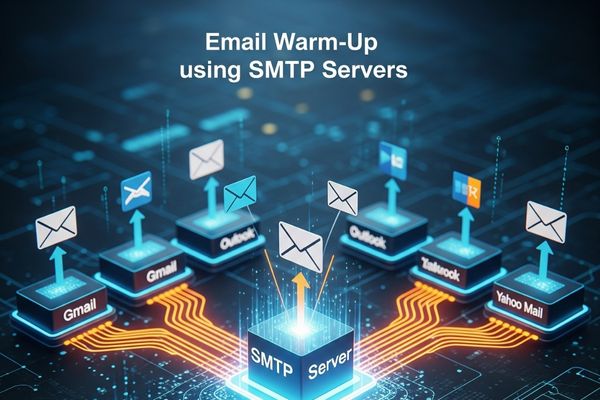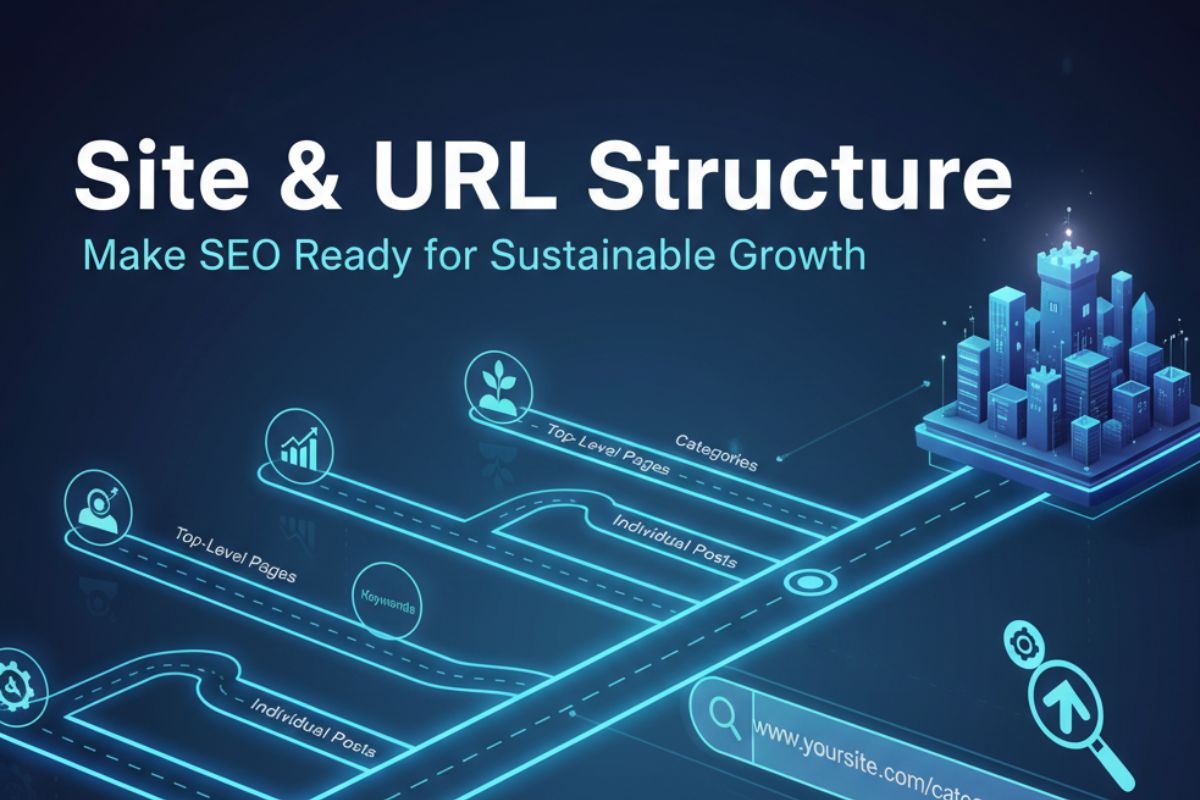Emails are still an indispensable tool in the world of digital marketing, despite the introduction of AI and rapid advancements. Whether you are looking for customer outreach campaigns, sending newsletters, and lead nurturing, emails hold an important place.
However, while doing all this, it is important to get your emails delivered to the inbox. If not, emails can become your biggest setback, especially when you’re starting new with a fresh email id. This is where email warm-up process using SMTP servers come in.
If you send hundreds of emails in one go with your new account (referred to as cold account), you’ll be flagged spam. Hence, none of your emails will go into the inbox. So, what to do? You need to do email warm-up process. This is what we are going to discuss here.
Let us start with the basics.
Table of Contents
ToggleWhat is Email Warm-Up?
In simpler terms, email warm-up is a process of building trust with your internet service provider (ISP), like Google, Yahoo, or Outlook.
This is always required when you are staring with a new email account. It ensures that you are a legitimate sender. As a result, the chances of your emails landing into the inbox of the recipients becomes high.
Here, you need to start by sending small volumes of emails to verified recipients initially. Later, you can increase the count steadily.
This signals your ISP that you are a genuine business and do intend to harm the recipients by any means. Over time, you reputation will keep improving and more of your emails will go into the inboxes.
Why do SMTP Servers Matter?
SMTP servers are same for email marketing as spine to a human body, the backbone. These servers create a smooth and reliable path between the sender and recipient, ensuring high delivery rates.
When you hit “send,” your SMTP server communicates with the recipient’s server to deliver the message by confirming that the email address is correct.
Now, the question here is why it is important to use SMTP server during email warm-up process. Let us uncover this:
1. Direct Control
SMTP servers make you the main man to control how your emails are sent. Hence, you need not rely on third-party platforms solely.
2. Authentication
They help you pose as a legitimate sender in the eyes of your ISP, as these servers support and follow proper authentication methods, like SPF, DMARC, and DKIM.
3. Scalability
As you increase your email volume, SMTP servers let you scale seamlessly without affecting deliverability.
4. Consistency
ISPs track sending habits to confirm that the sender is genuine. Here, SMTP servers help you maintain a steady pattern, a critical factor during email warm-up process.
What Are the Disadvantages of Ignoring Email Warm-up?
Many businesses are tempted to bypass warm-up in the process of reaching to a huge audience in less time.
If you are one of those, beware. Ignoring email warm-up can harm your brand’s reputation, and getting recovered could be a tricky task. Here are the challenges you might face if you skip warm-up:
1. Landing in Spam
This is one of the most common and deadliest impact of not warming up your new email account. Sending too many emails with a new id could mark you as a spammy sender.
Hence, your ISP will consider your emails junk. As a result, they will land in the spam folder of the recipients.
2. Blacklisting
In most cases, ISPs blacklist the domain or IP, considering the sender spammer and harmful. Hence, you won’t be able send emails.
3. Damaged Reputation
Being blacklisted or landing in a spam folder directly impacts the sender reputation, a key parameter in identifying the authenticity and legitimacy of the sender. This could significantly impact your long-term email marketing strategy.
4. Wasted Resources
Last but not least. Sending bulk emails from a cold account results in very less emails landing into the inbox. Hence, this wastes your time and money.
How the Email Warm-Up Process Works?
Warming up an account isn’t complicated, but it does require patience and consistency. Let’s break it down into clear steps:
1. Start Small
Send 10–20 emails a day during the first week. Choose recipients you trust—like team members or close contacts—who are likely to open, reply, and mark your messages as important. These interactions tell ISPs your emails are valuable.
2. Gradually Increase Volume
Each week, increase your sending volume by 20–30%. For example, if you start with 20 emails daily, move up to 40 the next week, then 80 the following week, and so on.
3. Focus on Engagement
Engagement matters as much as volume. Ask recipients to reply, open, and even forward your emails. The higher the engagement, the stronger your reputation becomes.
4. Authenticate Your Domain
Set up SPF, DKIM, and DMARC records on your domain. These authentication protocols confirm that your emails aren’t being spoofed and help ISPs trust your identity.
5. Maintain Consistency
Avoid sudden spikes in sending volume. ISPs look for consistent behavior. Even once your account is warmed up, send in patterns that reflect real usage.
6. Monitor Metrics
Keep an eye on open rates, bounce rates, and spam complaints. If you notice deliverability issues, slow down your warm-up or adjust your sending practices.
Best Practices for Email Warm-Up with SMTP
To ensure your warm-up process goes smoothly, follow these proven best practices:
- Use a Custom Domain: Don’t rely on free domains like Gmail or Yahoo for business outreach. A custom domain builds credibility.
- Segment Campaigns: Once warmed up, segment your contacts to send more personalized, targeted messages.
- Keep Content Clean: Avoid spammy words (e.g., “FREE,” “GUARANTEED”) during the warm-up period. ISPs are watching closely.
- Maintain a Healthy List: Send only to verified, opted-in contacts. High bounce rates can undo your progress.
- Stay Patient: Warming up takes weeks, not days. Rushing the process increases your risk of being flagged.
Common Myths About Email Warm-Up
1. “I don’t need to warm up if I’m using a big email platform.”
False. Even if you’re using services like Mailchimp or SendGrid, your domain reputation still matters. Without warm-up, you’ll struggle with inbox placement.
2. “Warm-up only matters for new accounts.”
Not true. If an account has been inactive for months, it needs warming up again before sending large campaigns.
3. “Once warmed up, I can send unlimited emails.”
Wrong. Even after warming up, you must respect sending limits and keep your reputation intact with consistent practices.
The Long-Term Benefits of Warm-Up
While warm-up requires effort, the payoff is worth it. A properly warmed-up account provides:
- Higher Inbox Placement: More of your emails reach the right audience.
- Stronger Reputation: ISPs view you as a reliable sender.
- Better Engagement: Your audience sees and interacts with your messages.
- Scalable Outreach: You can safely increase your sending volume over time.
In short, warm-up isn’t just a hurdle to clear, it’s the foundation of a sustainable email strategy.
Final Thoughts
The email warm-up process using SMTP servers may sound technical, but it’s really about building trust step by step.
By starting small, staying consistent, and using authentication properly, you’ll create a strong sender reputation that pays dividends for every campaign you run.
Remember: email isn’t just about sending, it’s about delivering. With a thoughtful warm-up plan, your emails will reach the inbox, connect with readers, and deliver real results.





